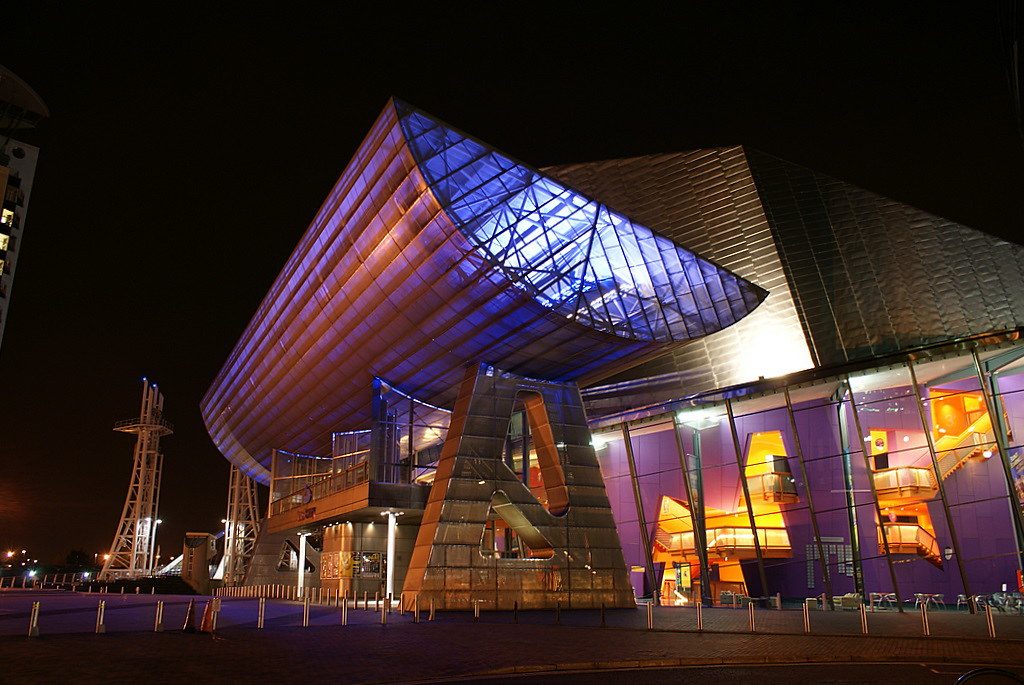
Renowned architect, Michael Wilford CBE, who designed The Lowry theatre building has died aged 84.
Post-modernist architect, Michael Wilford CBE’s death died on Friday 10th March was confirmed today by his daughter, Karenna Wilford.
Responsible for projects such as converting a Grade I-listed 19th-century warehouse in Liverpool into a major gallery for the Tate and the British Embassy in Berlin, Wilford worked with long-time collaborator, James Stirling.
Wilford studied at the Northern Polytechnic School of Architecture, London, from 1955 to 1962, and at the Regent Street Polytechnic Planning School, London, in 1967.
Wilford won the Royal Institute of British Architects’ Stirling Prize for excellence in architecture in 1992, the same year his collaborator died.
Between 1990 and 1991 a competition was launched and architects James Stirling Michael Wilford Associates were selected to design the new Lowry theatre in Salford. After the death of James Stirling in June 1992 Michael Wilford continued the project and the building was opened in 2000.
In a statement, Felicity Goodey CBE DL, Founding Chair, The Lowry & Sir Rod Aldridge OBE, Chair, The Lowry said: “We are both deeply saddened to hear of the passing of Architect Michael Wilford CBE.
“Michael realised the huge ambitions we all had for The Lowry, both as an international arts centre and as a beacon of regeneration for the city. He understood from the outset that Lowry should be ‘international’ in terms of quality and aspiration but deeply rooted in its community.
“He was always the first to design solutions to any challenge and succeeded in creating a beautiful space capable of hosting the world’s most famous artists while making everyone feel at home and have fun. His vision and immeasurable talent will live on forever through the beautiful building he created, here at the heart of Salford Quays.
“It was an honour and real pleasure to work with him, and we will forever be grateful to him for The Lowry. His vision and the incredible legacy he leaves behind, in the building and the communities it serves, continues to help transform lives and create countless new opportunities.”














Recent Comments